The Living Root Bridges of Meghalaya – Bridging communities
You think Bridges are non-living things? Wrong
You think Bridges are always built? Wrong
You think Bridges become weak with time? Wrong
You think Bridges retain the same size? Wrong
You think Bridges are not handmade? Wrong
You think Bridges are built by engineers? Wrong
We are talking about the living root bridges of Meghalaya locally known as Jing Kieng Jri, which are not built but naturally grown and directed to take the form of a sturdy bridge. These have been classified as a UNESCO World Heritage Site. There are many living root bridges scattered around Meghalaya, but only 11 are functional.
Call it nature’s divine art, call it the art of tree shaping and nurturing or call it traditional wisdom to connect remote villages during heavy rains; this is an innovative solution to cross over the flooded rivers and streams.
The credit for the visualization, crafting and nurturing of the living root bridges goes to the Khasi tribesmen. Meghalaya has 3 dominant tribes- Khasi, Jaintia and Garo. The forefathers of the Khasis had come up with this solution because the bamboo and wooden bridges could never withstand the heavy rains. They can be called as the architects of these structures.
What is a living root bridge?
It is a type of a suspension bridge made up of living roots of rubber fig trees. The bridge, hanging above a stream/river, is made up of intertwining aerial roots of rubber fig trees that grow on both sides of the creek.
These are found in Khasi and Jaintia hills of Meghalaya. While the vintage of these bridges are not known, it is believed that they more than 500 years old. The earliest written record of Sohra’s (Cherrapunji’s) living root bridges is by Lt Henry Yule, who has mentioned about coming across Living root bridges in the year 1844 in the Journal of the Asiatic Society of Bengal.
Meghalaya receives heavy rainfall during monsoon, which results in overflowing rivers. It is believed that the Khasis started erecting bamboo bridges, but the structure made up of bamboo always succumbed to the fierce monsoon. The tribesmen came up with an innovative solution and that was to create bridges from the naturally growing roots of rubber trees (which grow by the rivers and streams) and bonded to betel nut tree trunks.
Methods of creating or growing the Living Root Bridge
There are various methods used to create these bridges. One of the methods is by directing the roots manually by hand.
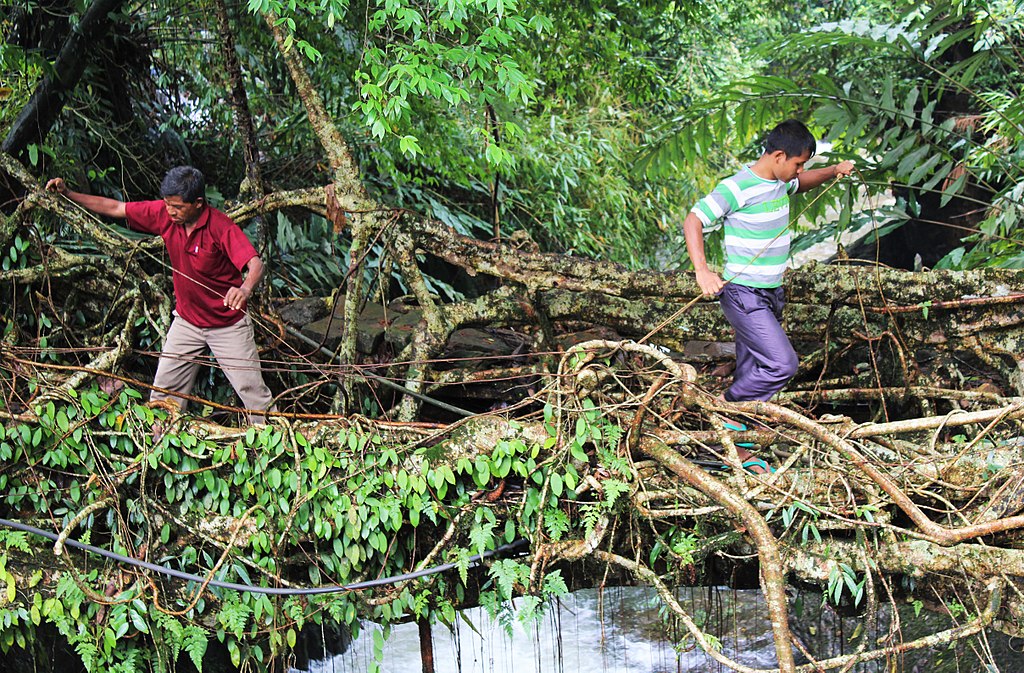
Using scaffolds made up of wood or bamboo and directing the roots by wrapping them around the wood or bamboo is another method of making the bridges.

A third method is with Areca Palm trunks.

The rubber tree roots are made to grow through the hollowed-out trunks placed across rivers and streams. Once the roots reach the other side of the water body, they get attached to the soil. The bridges are further strengthened and stabilized with the help of stones, pebbles and sticks. You can say it is a bridge paved with stone J A combination of humidity and foot traffic help compact the soil over time, and the tangle of roots grows thick and strong. Mature bridges stretch 15 to 250 feet over deep rivers and gorges, and can bear impressive loads—upwards of 35 people at a time.
How do these Living Root Bridges survive for so many years ?
Unlike artificial bridges, these become stronger with time. Growing the living root bridges is a tradition passed on through generations
The root bridges continue to grow and self-strengthen themselves for as long as the tree they are a part of remains healthy. The time to become functional and fit for use depends on local conditions such as the health of the tree, the way the bridge is being grown, and the availability of nutrients in the soil that its being grown in.
They regularly withstand flash flooding and storm surges that are common in the region—a low-cost and sustainable way to connect remote mountain villages scattered throughout the steep terrain.
The most popular living root bridge is the Umshiang Double Decker bridge of Nongriat village.. There are 3 other such bridges which are found near the villages of Padu and Nongbareh. The Umshiang Bridge is said to be almost 2 centuries old (180 years)
A hike up to the Double Decker Living Root Bridge
Reaching the double decker bridge is an achievement in itself. If you are a person who likes hikes and treks, this uphill walk is a must. This bridge is at a height of approx.732 metres (2,400 feet) above the Umshiang River and is 20 metres (approx. 66 feet) long. The one-way trek to this bridge is 3 kilometers, and the journey to the top offers great views of the mountains and waterfalls.
At the end, all I can say is “Not iron not steel, these living root bridges are a real big deal”!
By the way, the living root bridges have also been created in Indonesia at Jembatan akar on the island of Sumatra, and in the Banten province of Java, by the Baduy people. One last point about Meghalaya. If you are visiting the Living root Bridges don’t forget to visit Mawlynnong and Dawki .
For more such cultural experiences in India, you could take a look at the article on the places of cultural interest in India
In case you are keen on traveling to Meghalaya, you could take a look at the Meghalaya itinerary and cover the living root bridges as a part of this itinerary.
In case you are a nature lover, check out the natural wonders of India.
India is not just about spirituality. There are many more facets to this ancient land – culture, mystery, history, nature, wildlife and so on. Read more about how the different facets of India travel are celebrated here…
How to reach the Living root bridge ?
Cherrapunji is a 5-hour drive from Guwahati airport and 2 hours from Shillong airport. You can reach Guwahati by flight or train from any of the major cities in India .
Best time to visit?
The best time to visit is between February to May. If cold is not an issue, the winter months from October to January are also great. While Monsoons are great in Meghalaya, it would be difficult to trek up to reach the top.

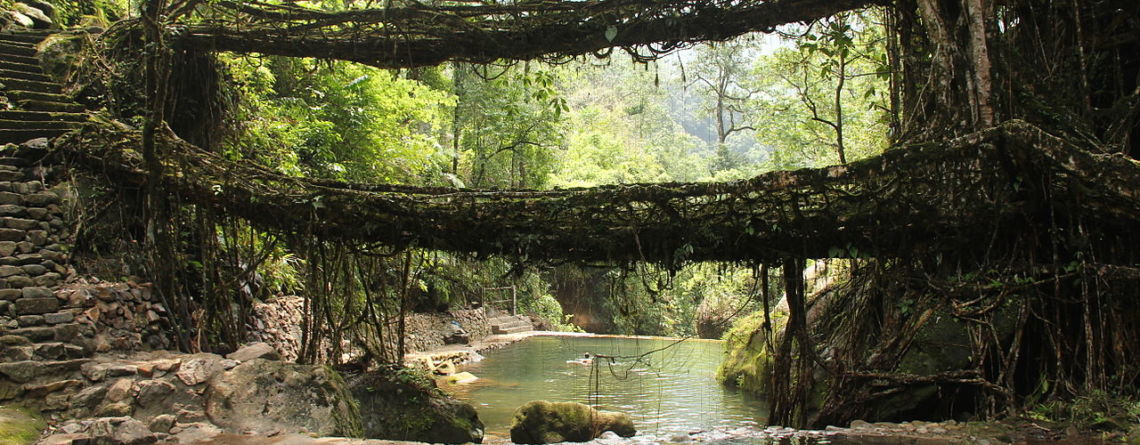
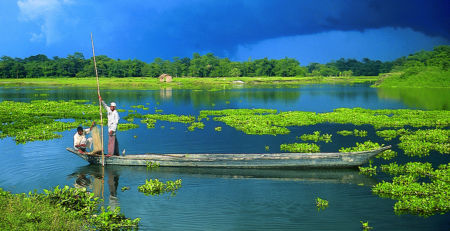
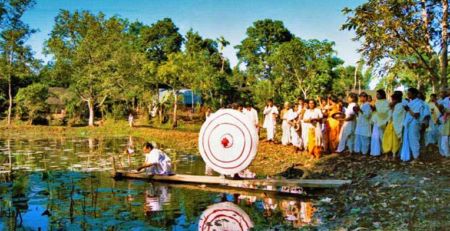

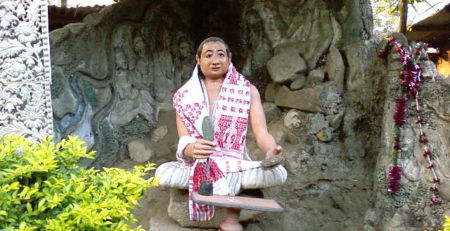
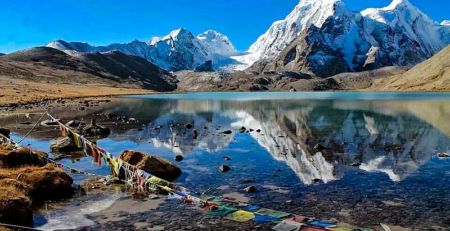
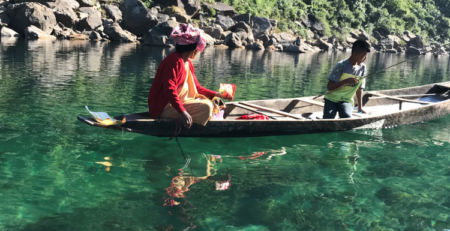

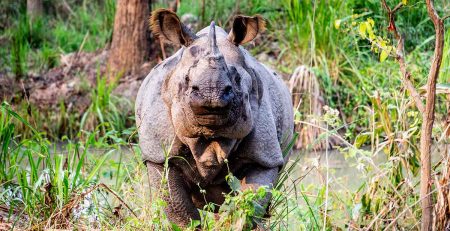
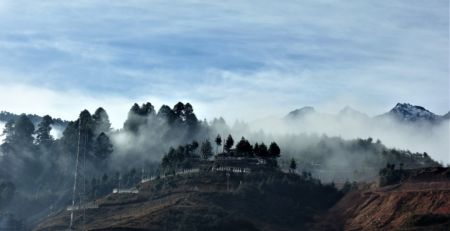

Leave a Reply